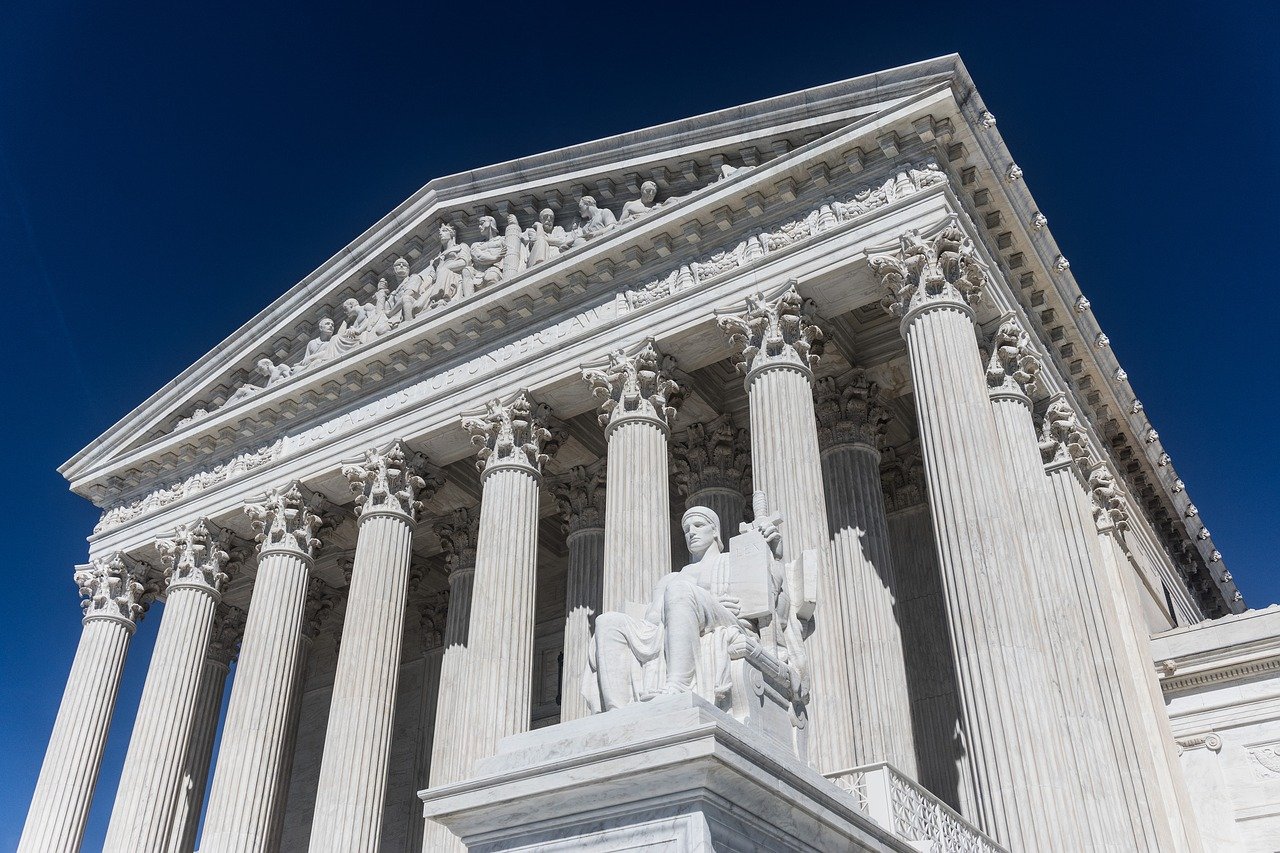Tag: Bold Justice
-
Bold Justice: SCOTUS is back in session!
Posted on

Bold Justice: SCOTUS begins October term 2021 Welcome to the October 4 edition of Bold Justice, Ballotpedia’s newsletter about the Supreme Court of the United States (SCOTUS) and other judicial happenings around the U.S. It’s October and we all know what that means—the court is back in session! The October 2021-2022 term has begun. Let’s…
-
Bold Justice: SCOTUS holds May sitting
Posted on
We #SCOTUS and you can, too! May sitting The Supreme Court will hold its May argument sitting on May 4, hearing one case in a one-hour session. In keeping with each sitting of this term, the court will hear arguments remotely and will provide live audio to the public. Terry v. United States concerns sentencing…
-
Bold Justice: SCOTUS Marches on
Posted on
We #SCOTUS and you can, too! The Supreme Court will finish its February sitting this week and is scheduled to begin its next sitting on March 22. To date, each of the 2020-2021 term’s sittings have been conducted via teleconference with live audio, based on public health guidance in response to COVID-19. Click the links…
-
Bold Justice: SCOTUS begins February sitting
Posted on
We #SCOTUS so you don’t have to The Supreme Court will begin its February sitting during the week of February 22 via teleconference with live audio. The court is conducting proceedings this way in accordance with public health guidance in response to COVID-19. SCOTUS will hear arguments in 11 cases for a total of six…
-
Bold Justice: First Federal Vacancy Count released for the Biden Administration
Posted on
Welcome to the February 8 edition of Bold Justice, Ballotpedia’s newsletter about the Supreme Court of the United States (SCOTUS) and other judicial happenings around the U.S. For all of us who love following the courts, February has plenty to offer–like a box of chocolates and a rose bouquet. The Supreme Court has been a…
-
Bold Justice: SCOTUS grants review in 14 additional cases
Posted on
We #SCOTUS, so you don’t have to The Supreme Court will hear two hours of oral arguments during the week of January 18 via teleconference with live audio. The court is conducting proceedings this way in accordance with public health guidance in response to COVID-19. Click the links below to read more about the specific…
-
Bold Justice: SCOTUS begins January sitting
Posted on
Welcome to the January 11 edition of Bold Justice, Ballotpedia’s newsletter about the Supreme Court of the United States (SCOTUS) and other judicial happenings around the U.S. New year, new court business: SCOTUS ushers in its 2021 sittings to hear arguments and Congress has begun its 117th session. With all of these updates, Ballotpedia’s got…
-
Bold Justice: Court begins December sitting
Posted on
We #SCOTUS, so you don’t have to Arguments The Supreme Court heard five hours of arguments the week of November 30 and will hear five hours of arguments this week via teleconference with live audio. The court is conducting proceedings this way in accordance with public health guidance in response to COVID-19. SCOTUS has agreed…
-
Bold Justice: Court considers ACA’s individual mandate
Posted on
%%subject%% Alexander Hamilton may have thought them the least dangerous branch, but we at Ballotpedia think federal courts are the most exciting! Welcome to the November 9 edition of Bold Justice, Ballotpedia’s newsletter about the Supreme Court of the United States (SCOTUS) and other judicial happenings around the U.S. Election Day was almost one week…
-
Bold Justice: Amy Coney Barrett joins the court
Posted on
%%subject%% Alexander Hamilton may have thought them the least dangerous branch, but we at Ballotpedia think federal courts are the most exciting! Welcome to the November 2 edition of Bold Justice, Ballotpedia’s newsletter about the Supreme Court of the United States (SCOTUS) and other judicial happenings around the U.S. Election Day is tomorrow! Ballotpedia’s Election…

